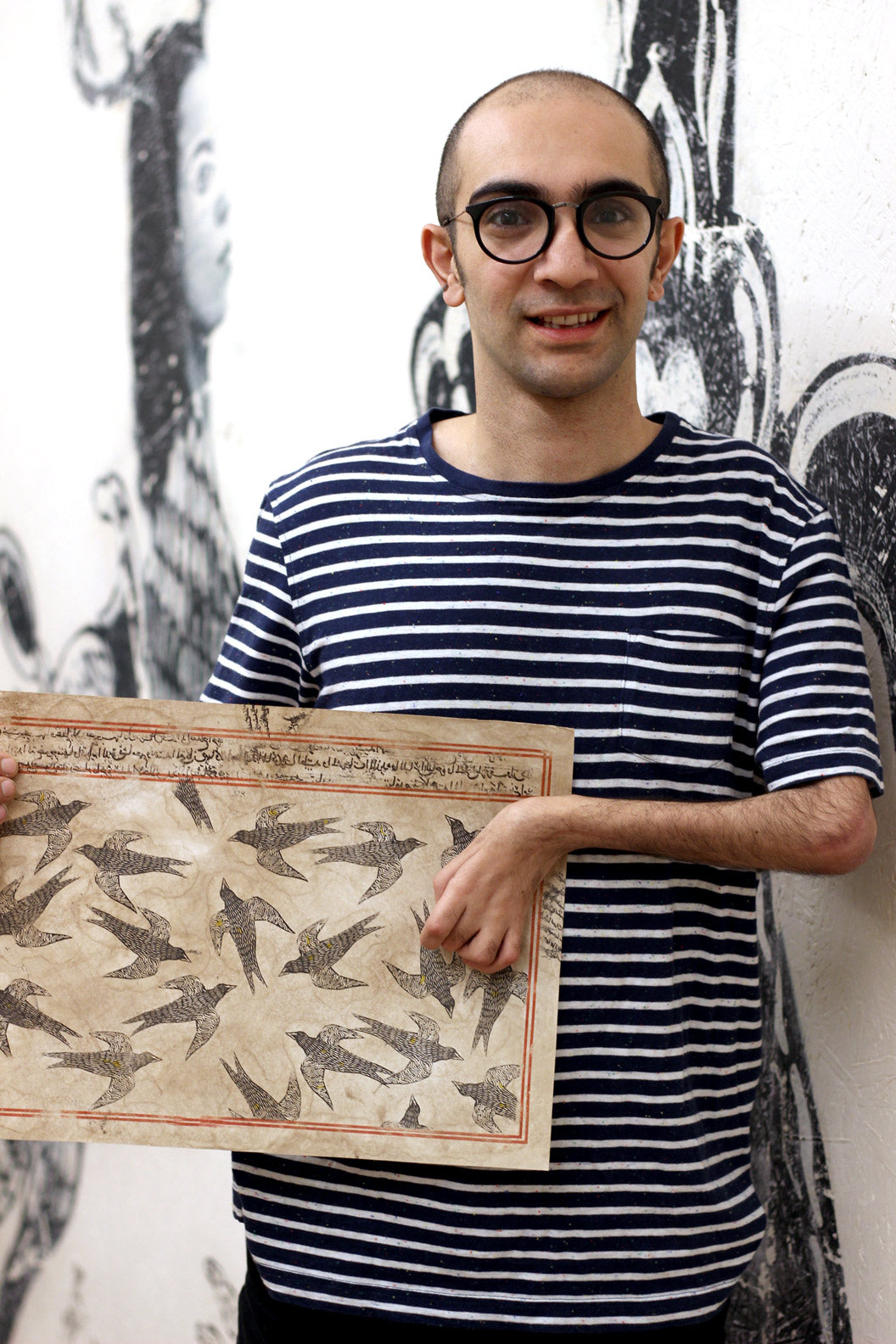Interview with Mohammad Barrangi for Toi Art Gallery

Mohammad Barrangi Fashtami was born at Rasht, a northern city of Iran. He started drawing and illustrating at 13 years old and pursued a career in the art field. He loves using printmaking techniques. His art also includes the production of large murals of his drawings through a process of laser printing and solvent transfer onto wooden walls. His drawings are influenced by traditional Persian illustration techniques, combined with contemporary methods of collage and street art. Mohammad is interested in creating characters that have disabilities, often combining human and animal features to create a dream-like scenario in which bodies are weird, different, and beautiful. He is also influenced by his upbringing in the Middle East. The colors used in his artworks are inspired by old tiles and Persian rugs. Mohammad uses symbols and signs coming from Iranian believes and eastern people. This is what Mohammad says about his art: “I create images that come from my soul and feelings in which I show part of my homeland. I also use Persian calligraphy and alphabetic shapes as the main components in my work. These elements are something like poetry for me. I try to invite the audience to visit Iran by looking at my artwork and getting familiar with my process of thinking. I hope I am being able to convey a little bit of this with my art.”

Where did you grow up? How was your childhood like?
I was born in the northern city of Iran (Rasht city)
A city where is almost always rainy. I have spent a lot of time with my parents in the orthopedic doctor's office for as long as I can remember, because I was born with a left hand disability. My childhood was a little different from other kids, I could take painting classes only during summer. My parents wanted to spare me from feeling different from my friends and suffer because of this.

Are you parents artists?
Not professionally, but my mother was very interested in hand- crafts and that makes me even more inclined to art.
When did you discover that you wanted to be an artist?
I was a teenager when I became more and more interested in studying art. I went through a lot of different challenges to get into art school, because the school principal believed that a person with a disability was not fitted for art. That's why I was motivated to try harder than others.

You often talk about how creating characters that have disabilities, often through a combination of animal and human features, helps you convey a message that different is beautiful. Could you tell us more about this and what inspires you?
I believe that a good work of art has to be integrated with the artist’s self-reflection and true story. My characters never have a hand, and if they do, they never have more than one hand, because I never had the experience of having two hands. I love animals very much and sometimes I think I understand their language better than human language.
And I always try to understand who they were in their previous life. This inspires me to use animal masks in most of my characters.
I must say that there are no male characters in my visual representation. All my characters are female. For example, I recently illustrated a book (Conference of the birds) a beautiful and mystical story. In this story, all birds are female, even the mythical bird Simorgh, symbol of God. And because of the tradition in Iran that restricts showing the woman’s face I use bird’s masks that cover women’s expressions. I want to show the inner feminine world and how I feel about women, I believe that God can be a woman, God is the embodiment of love.
Fear, limited edition print.
The New Year, limited edition print.
Name three artists that influenced your work.
I enjoy watching Abbas Kiarostami's films, I appreciate the way he looks and thinks about the world and nature. But I admire the expressive work of Joanna Concejo, Jesus Cisneros and Ana Juan.
Landscape by Joanna Concejo. Limited edition print.
Your work is shaped by Persian calligraphy and European classical paintings, why did you decide to mix these elements?
These days, all my efforts and focus are on this issue. I was born in the East and live in the West by combining the two cultural perspectives I deepen the images in my work. This is a big challenge for me, I am influenced both by traditional and contemporary art.
Music. Limited edition print.


Interview by Karina Miller
Do you want to learn more about Toi's artists? click on Joanna Concejo's interview
Leave a comment
Comments will be approved before showing up.








